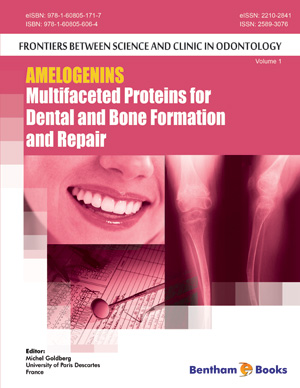Abstract
Significant advances have been made in understanding the role of amelogenin and other matrix proteins in the regulation of enamel formation, although the mechanism for this process is not fully understood. However, it is apparent that there are several guiding principles associated with the formation of mineralized tissues, although the mechanism by which enamel mineral forms differs from other mineralized tissues in several distinct aspects. This review briefly describes some of the similarities and difference between enamel, bone and dentin formation and highlights recent in vitro and in vivo studies from our laboratories that show that amelogenin regulates enamel mineral formation using a strategy that appears to be universally utilized in the development of mineralized tissues. More specifically, the presented studies show that full-length amelogenin has the capacity to stabilize the formation of amorphous calcium phosphate (ACP) and guide its organization into linear needle-like structures that subsequently fuse and organize into parallel bundles of apatitic crystals in vitro. Importantly, these in vitro findings are consistent with recent in vivo data presented that show that mineral morphology and organization in enamel are established by the organic matrix prior to its crystallization. These new findings should aid in the development of novel approaches for mineralized tissue regeneration and repair.
Keywords: Amelogenin, Enamel Formation, Bone, Dentin Formation, Apatitic Crystals, Regeneration, Repair






















